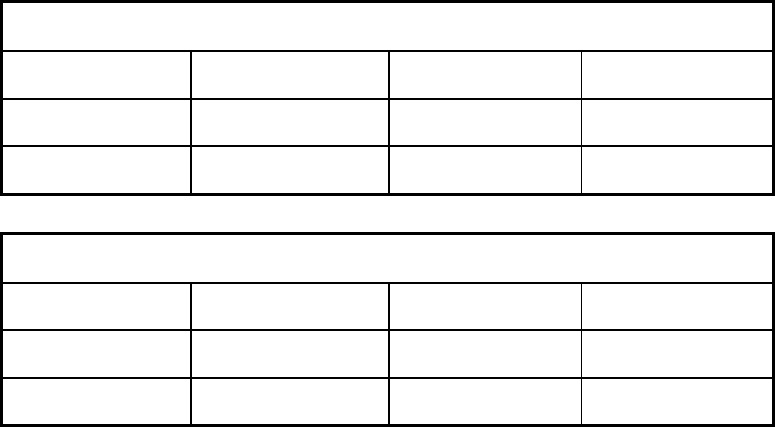Askey Computer WLU5053 USB WLAN Module User Manual
Askey Computer Corp USB WLAN Module
user manual
WLAN USB Module
WLU5053-D4(ROHS)
Quick Setup Guide
V1.0
Askey Computer Corp. WLU5053-D4(ROHS)
Features
Compatible with IEEE802.11a/b/g/n
How to use this WLAN USB module
1. Install the module to the Host device. (TV or printer or other mobile device)
2. Turn on the power of the Host device. (TV or printer or other mobile device)
3. From the PREFERENCES menu, highlight Network Setup and press .
4. Press or to highlight Network Type, and then press or to select
Wireless connection, and press .
Note: If WLAN USB module is not connected, Wireless cannot be selected.
Wireless Setup
Note:
• This feature is grayed out when the WLAN USB module is not connected or
Network Type is disconnect.
• Do not remove the WLAN USB module while changing the settings of the
wireless connection or communicating.
There are 3 connection method on “Wireless connection” for wireless setup:
•Easy Setup (WPS)
If AP corresponds to WPS, this can be used. WPS (Wi-Fi Protected
Setup™) is standard designed to execute connection of wireless LAN
equipment and setup of security easily. WPS will automatically configure all
wireless settings.
•Assisted Setup (setup by using AP's notification information)
Network Name, Authentication, and Encryption are decided based on
information from AP. You manually set Security Key.
Note: At this function, The Software Keyboard window will appear.
•Manual Setup (to input all settings)
See below “Manual Setup” for detail.
Manual Setup
1. From the PREFERENCES menu, highlight Network Setup, and press .
2. Press or to highlight Wireless Setup, and press .
3. Press or to highlight Manual setup, and press .
4. Press or to highlight Network Name, and press . The Software
Keyboard window will appear.
5. Input the Network Name by using the Software Keyboard. To save your
setting, press
6. Press or to highlight Authentication, and then press or to
select Open System, Shared Key, WPA-PSK or WPA2-PSK.
7. Press or to highlight Encryption, and then press or to select
None, WEP, TKIP or AES.
8. Press or to highlight Security Key, and press .
9. Input the Security Key by using the Software Keyboard. To save your
setting, press
10. Press or to highlight Done, and press .
(Please refer to the user manuals of your Host device and AP for more details.)

This radio transmitter (identify the device by certification number, or model number if Category
II) has been approved by Industry Canada to operate with the antenna types listed below with
the maximum permissible gain and required antenna impedance for each antenna type
indicated. Antenna types not included in this list, having a gain greater than the maximum gain
indicated for that type, are strictly prohibited for use with this device.
Antenna General Information for 2.4G
No. Ant. Cat. Ant. Type Gain (dBi)
1 Integral PIFA 3.19
2 Integral PIFA 1.66
Antenna General Information for 5G
No. Ant. Cat. Ant. Type Gain (dBi)
1 Integral PIFA 3.37
2 Integral PIFA 3.01
Federal Communication Commission Interference Statement
This equipment has been tested and found to comply with the limits for a Class B digital device,
pursuant to Part 15 of the FCC Rules. These limits are designed to provide reasonable
protection against harmful interference in a residential installation. This equipment generates,
uses and can radiate radio frequency energy and, if not installed and used in accordance with
the instructions, may cause harmful interference to radio communications. However, there is
no guarantee that interference will not occur in a particular installation. If this equipment does
cause harmful interference to radio or television reception, which can be determined by turning
the equipment off and on, the user is encouraged to try to correct the interference by one or
more of the following measures:
Reorient or relocate the receiving antenna.
Increase the separation between the equipment and receiver.
Connect the equipment into an outlet on a circuit different from that to which the receiver is
connected.
Consult the dealer or an experienced radio/TV technician for help.
Any changes or modifications not expressly approved by the party responsible for compliance
could void the user's authority to operate this equipment.
This device complies with Part 15 of the FCC Rules. Operation is subject to the following two
conditions: (1) This device may not cause harmful interference, and (2) this device must accept
any interference received, including interference that may cause undesired operation.
For product available in the USA/Canada market, only channel 1~11 can be operated.
Selection of other channels is not possible.
This device is restricted to indoor use when operated in the 5.15 to 5.25 GHz frequency range.
This equipment complies with FCC radiation exposure limits set forth for an uncontrolled
environment. This equipment should be installed and operated with minimum distance 20cm
between the radiator & your body.
The final end product must be labeled in a visible area with the following " Contains TX FCC ID:
H8N-WLU5053 ".
Industry Canada Statement
This device complies with Industry Canada licence-exempt RSS standard(s). Operation is
subject to the following two conditions: (1) this device may not cause interference, and (2) this
device must accept any interference, including interference that may cause undesired operation
of the device.
The device for the band 5150-5250 MHz is only for indoor usage to reduce potential for harmful
interference to co-channel mobile satellite systems;
This transmitter module is authorized only for use in device where the antenna may be installed
such that 20 cm may be maintained between the antenna and users. The final end product
must be labeled in a visible area with the following: “Contains transmitter module IC:
1353A-WLU5053”.